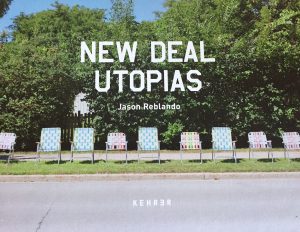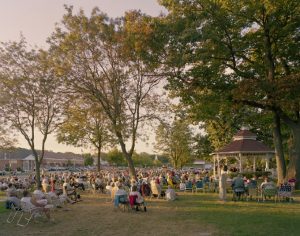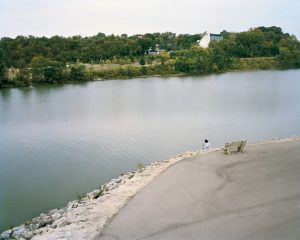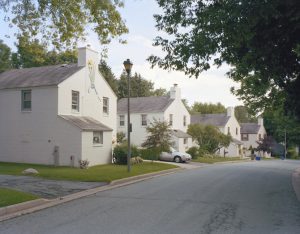 Over three years Jason Reblando, a Chicago artist and photographer, trained his camera on three Greenbelt towns — Greenbelt, Maryland; Greenhills, Ohio; and Greendale, Wisconsin— constructed during the Depression to house poor Americans, many of them displaced from the Dust Bowl.
Over three years Jason Reblando, a Chicago artist and photographer, trained his camera on three Greenbelt towns — Greenbelt, Maryland; Greenhills, Ohio; and Greendale, Wisconsin— constructed during the Depression to house poor Americans, many of them displaced from the Dust Bowl.
Rexford Tugwell, a Columbia economics professor tapped to head FDR’s Resettlement Administration (RA), modeled the Greenbelt program on the Garden City movement of early 20th Century England, integrating housing with nature. Tugwell’s dream was to create not only housing for those in need, but also a flourishing community. “My plans are fashioned and practical,” he said. “I shall roll up my sleeves—make America over!”
The towns incorporated features designed to encourage neighborly interaction—shared courtyards and lawns, parks and playgrounds, intersecting pathways, public artworks, a swimming pool. Town residents managed schools, shops, and community buildings as cooperatives.
Not surprisingly, conservatives in Congress derided the Greenbelt experiment as both extravagant and “socialist,” and sought to end it.
To win support for the Greenbelt projects, Tugwell called on his former graduate student, Roy Stryker, head of the Information Division of the RA (soon to become the Farm Securities Administration). Stryker famously deployed FSA photographers to document the human desperation that the New Deal agencies were working to address. Photographs by the likes of Dorothea Lange, Arthur Rothstein, and Walker Evans captured some of the best-known images of the victims of the Great Depression. Lesser known were the RA’s photographs of the Greenbelt towns that conveyed an America on the road to recovery. Nonetheless, under pressure from Congress and wealthy farmers deprived of their tenant work force, the RA was discontinued in 1936.
Seventy-five years later, author and photographer Jason Reblando has re-captured the founding vision of the Greenbelt towns in his large-format book, New Deal Utopias. His color photographs of the tidy homes and well-tended grounds surrounded by farms and forests recall a kind of everyday orderliness—both ordinary and reassuring. Portraits of the towns’ 21st Century inhabitants depict a sense of small-town pride.
Despite what Reblando’s photos convey, not all is utopian in these New Deal “utopias.” Residents of Ohio’s Greenhills near Cincinnati have struggled for years to defend their historic district from redevelopment. They won National Historic Landmark status for their town, but that doesn’t ensure its preservation. In a recent letter to the citizens of Greenhills, the National Park Service acknowledged the town’s historic significance and the need to preserve it: “Bear in mind that the shared heritage and stewardship of the village should extend throughout the community, and decisions made today will impact current and future generations,” it cautioned.
Published under the fiscal sponsorship of the Living New Deal, New Deal Utopias serves as a reminder that this shared heritage comprises far more than buildings alone.




